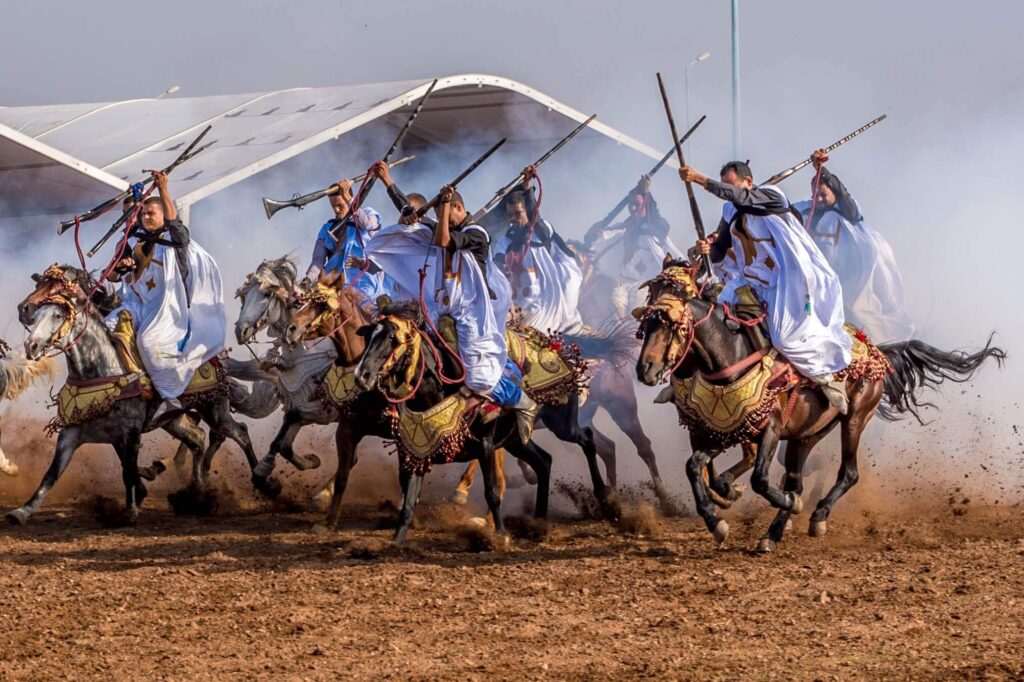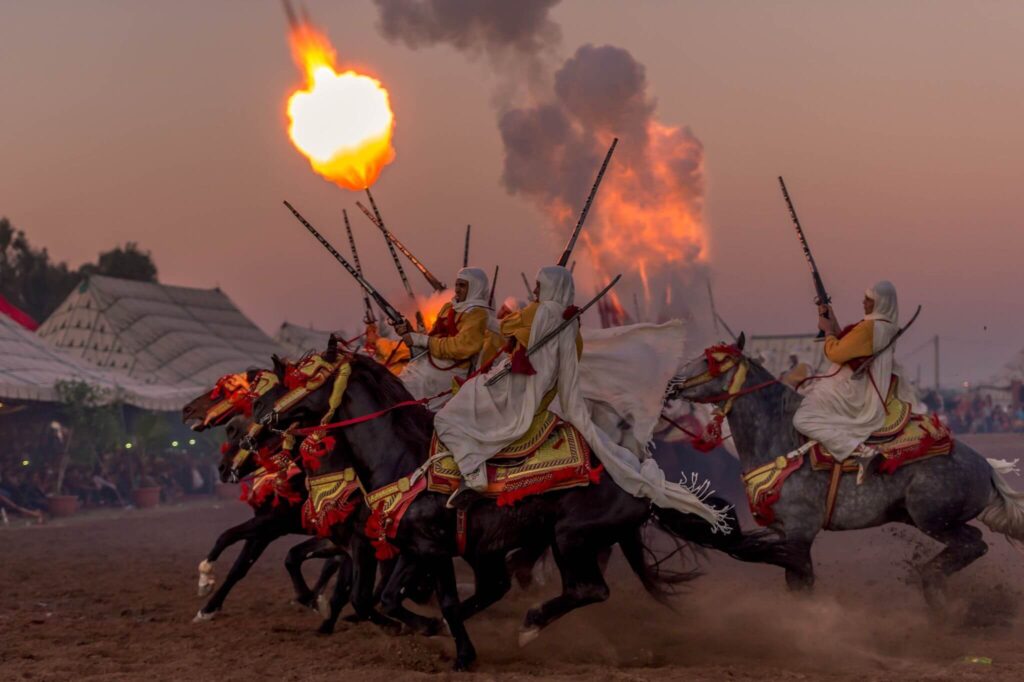“Tbourida” stands as a symbol of Morocco’s vibrant cultural landscape
The Moroccan Fantasia, also known as Tbourida, is a traditional equestrian performance deeply rooted in Moroccan culture.

This event is a form of martial art dating back centuries, originally used to simulate cavalry charges and demonstrate military prowess, but today it is mainly performed during cultural festivals and important celebrations.
Key Features of the Moroccan Fantasia (Tbourida):
Historical Roots: Tbourida has its origins in the ancient Arab and Berber cavalry charges.
It was developed as a way to practice battlefield tactics and to honor the skills of mounted warriors.
The name “Fantasia” is derived from the French word for spectacle, though it is known locally as Tbourida.
The Riders and Horses: The event showcases the skill and discipline of the riders, or “Tabour”, and their beautifully adorned horses.
The horses are often Arab-Berber breeds, known for their agility and endurance.
Riders are dressed in traditional attire that includes long white robes, turbans, and embroidered saddles, adding a visual richness to the event.

The Performance: The core of the Fantasia lies in a simulated battle charge. Riders line up in rows on horseback and, at the signal from their leader, charge forward in unison at full speed.
The goal is to perform a synchronized stop at the end of the charge, at which point all riders fire their rifles into the air simultaneously.
The precision of this stop and the timing of the gunfire are critical elements, as they represent the skill of the group.
Cultural Significance: Tbourida is more than just a show; it holds deep cultural significance, symbolizing the Moroccan values of bravery, honor, and community.

It is often performed at festivals like Moussems, weddings, and other important celebrations. It also plays a role in preserving the history and traditions of the country, particularly among rural and tribal communities.
Modern Recognition: Tbourida has gained international recognition, and in 2021, UNESCO added it to its Representative List of the Intangible Cultural Heritage of Humanity.
The event continues to be a source of pride for Moroccans and a way to connect with their historical roots.
Role of Women: In recent years, women have also begun to participate in Tbourida, with female riders forming their own troupes, showcasing their prowess and adding a modern layer to this traditional practice.

Tbourida is a captivating blend of culture, history, and skill, where the relationship between rider and horse is central to the spectacle.
Its performances are both a celebration of Moroccan identity and a reminder of the country’s warrior past.

